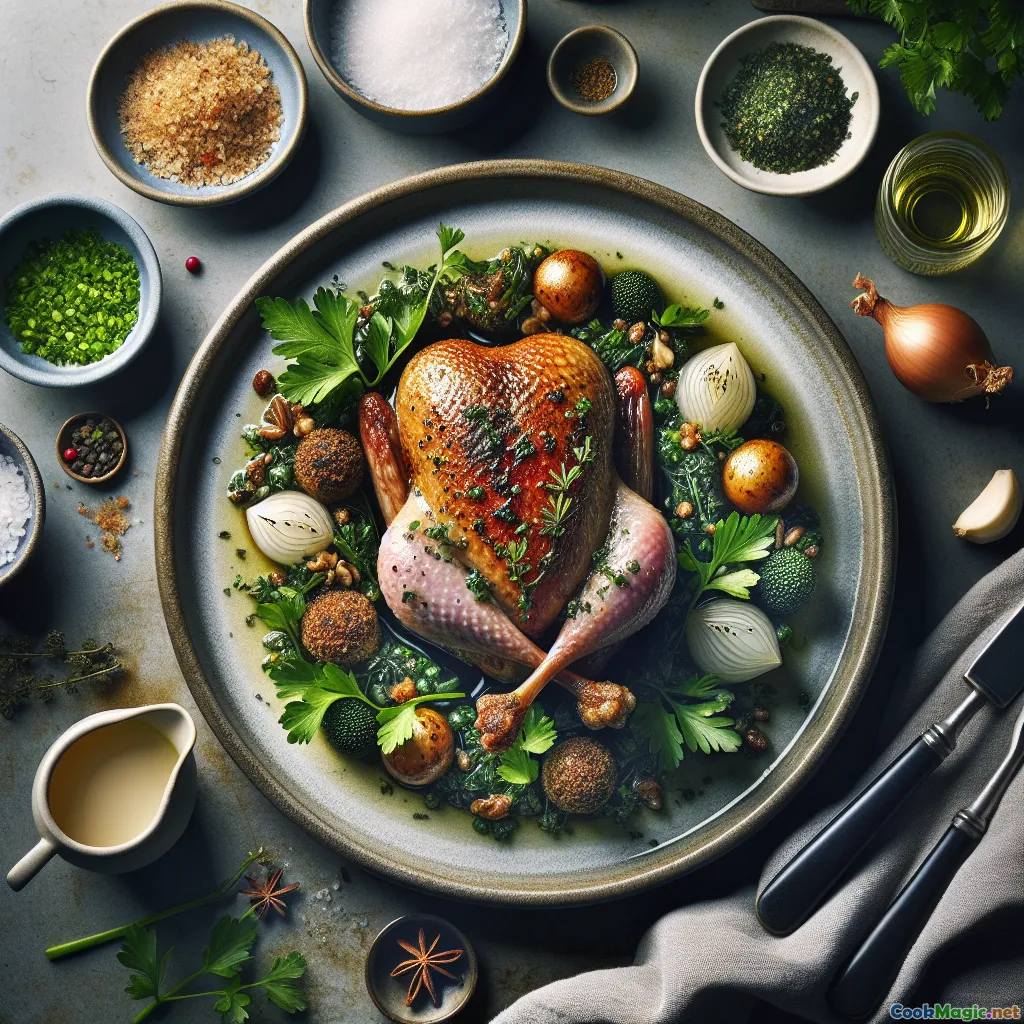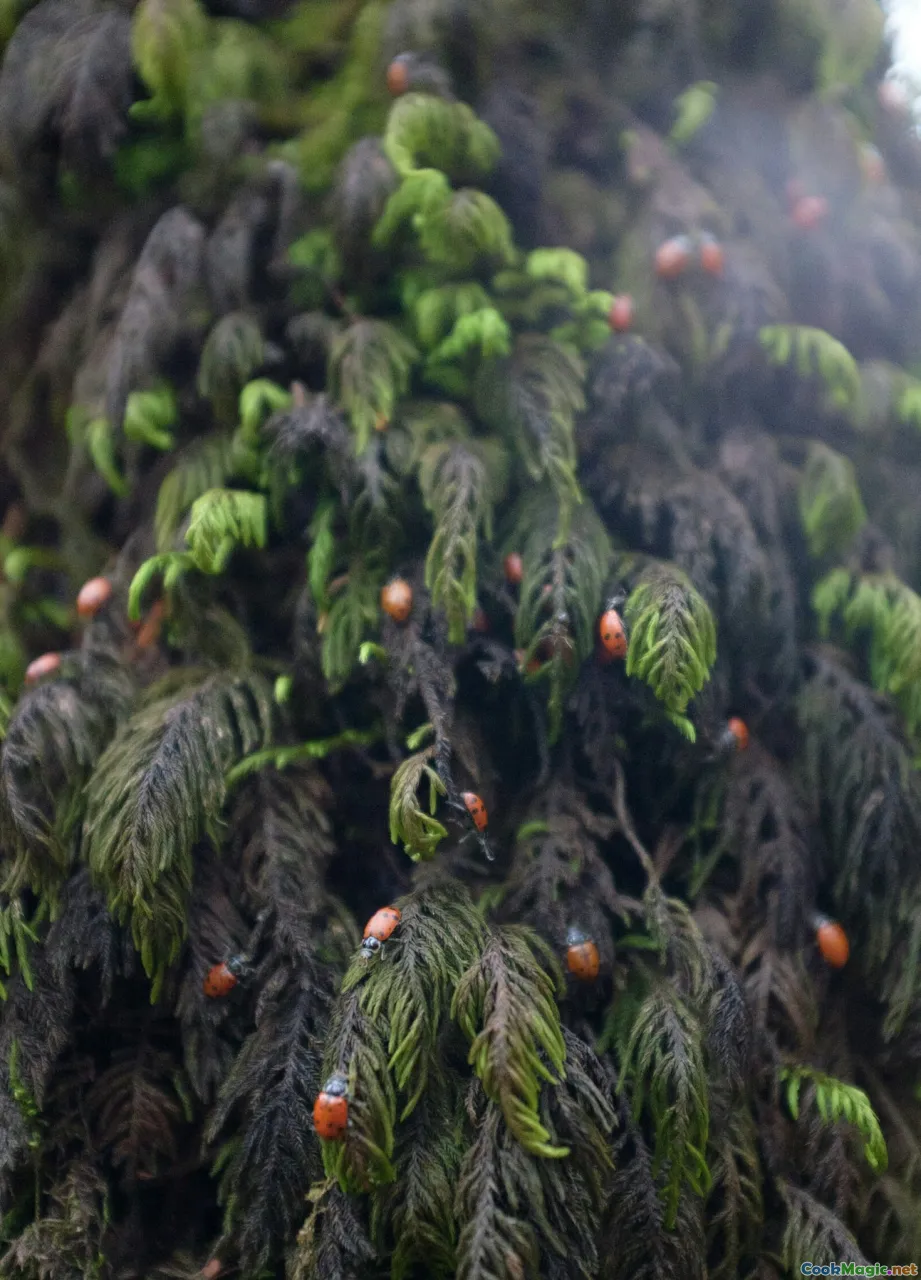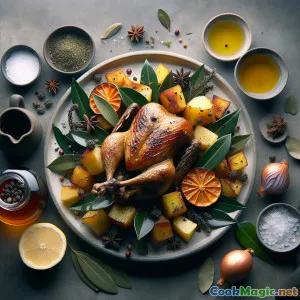
烤蒂蒂(绵羊鸟)配野生香草馅
(Roast Tītī with Wild Herb Stuffing)
(0 评论)食材
-
2 whole Tītī(muttonbird)、清洗干净的
(Ethically sourced; if unavailable, substitute small duck or squab)
-
1000 ml 冷水
(For brining and simmering to temper salinity)
-
60 grams 海盐
(For mild brine; reduce if birds are very salty)
-
30 grams 红糖
(Balances salinity in the brine)
-
1 whole 柠檬
(Zest for stuffing; wedges to serve)
-
120 grams 面包屑
(Day-old, coarse crumb preferred)
-
60 grams 无盐黄油
(For sautéing and enriching stuffing)
-
1 small 洋葱,细丁切
(About 80g)
-
3 cloves 大蒜(剁碎)
(Freshly minced for best aroma)
-
75 grams 野生香草混合(卡瓦卡瓦、西洋菜、野生百里香)、切碎
(Substitute parsley, sorrel, baby spinach, and thyme if needed)
-
10 grams 新鲜切碎的欧芹
(Adds brightness if wild herbs are limited)
-
1 tsp 现磨黑胡椒
(根据口味调整)
-
0.5 tsp 霍罗皮托胡椒或辣椒碎
(Provides gentle peppery heat)
-
1 tbsp 橄榄油
(For rubbing the skin before roasting)
-
2 tbsp 鸭肉脂肪或 tītī 脂肪
(For basting and pan sauce)
-
120 ml 鸡汤高汤
(For a quick pan sauce)
-
1 piece 厨房用细绳
(For trussing the birds)
-
20 grams 西洋菜枝,用于装饰
(Fresh, peppery finish)
-
1 tsp 柠檬皮
(From the lemon listed above)
(Ethically sourced; if unavailable, substitute small duck or squab)
(For brining and simmering to temper salinity)
(For mild brine; reduce if birds are very salty)
(Balances salinity in the brine)
(Zest for stuffing; wedges to serve)
(Day-old, coarse crumb preferred)
(For sautéing and enriching stuffing)
(About 80g)
(Freshly minced for best aroma)
(Substitute parsley, sorrel, baby spinach, and thyme if needed)
(Adds brightness if wild herbs are limited)
(根据口味调整)
(Provides gentle peppery heat)
(For rubbing the skin before roasting)
(For basting and pan sauce)
(For a quick pan sauce)
(For trussing the birds)
(Fresh, peppery finish)
(From the lemon listed above)
营养
- 份量: 4
- 每份大小: 1 portion (300g)
- Calories: 680 kcal
- Carbohydrates: 0 g
- Protein: 42 g
- Fat: 44 g
- Fiber: 3 g
- Sugar: 3 g
- Sodium: 900 mg
- Cholesterol: 210 mg
- Calcium: 70 mg
- Iron: 6 mg
制作步骤
-
1 - Prepare a mild brine:
In a large bowl, dissolve sea salt and brown sugar in 1 liter of cold water. Set aside. This step helps temper the preserved birds’ salinity.
-
2 - Rinse and soak the birds:
Rinse tītī under cold running water. Submerge in the mild brine for 10–15 minutes, then drain and pat dry with paper towels.
-
3 - Parboil to mellow:
Place birds in a pot, cover with fresh cold water, add a few lemon slices (from the listed lemon). Bring to a light simmer for 10–12 minutes. Drain and pat dry thoroughly.
-
4 - Heat oven and tray:
Preheat oven to 200°C (390°F). Set a rack over a roasting tray to allow fat to drip away, reducing greasiness.
-
5 - Cook Aromatics:
Melt butter in a skillet over medium heat. Sauté onion until translucent, 4–5 minutes. Add garlic; cook 1 minute until fragrant.
-
6 - Make wild herb stuffing:
Stir in wild herb mix and parsley; wilt briefly. Remove from heat. Fold in breadcrumbs, lemon zest, black pepper, and horopito. If dry, moisten with a splash of stock.
-
7 - Stuff and truss:
Loosely fill the cavities with stuffing (don’t pack tightly). Tie legs with kitchen twine. Rub skin with olive oil and a little pepper.
-
8 - Roast and baste:
Roast at 200°C for 25 minutes. Baste with rendered fat (or duck fat), reduce heat to 180°C (355°F), and roast 18–20 minutes more, until juices run clear and 74°C (165°F) at the thigh.
-
9 - Rest the birds:
Transfer to a board and rest 10 minutes to retain juiciness. Meanwhile, keep stuffing warm.
-
10 - Make quick pan sauce and serve:
Deglaze the roasting tray with stock and a touch of fat, scraping browned bits. Simmer to a glossy spoon-coating consistency, adjust seasoning, then strain. Carve birds and serve with stuffing, watercress, lemon wedges, and spooned sauce.
In a large bowl, dissolve sea salt and brown sugar in 1 liter of cold water. Set aside. This step helps temper the preserved birds’ salinity.
Rinse tītī under cold running water. Submerge in the mild brine for 10–15 minutes, then drain and pat dry with paper towels.
Place birds in a pot, cover with fresh cold water, add a few lemon slices (from the listed lemon). Bring to a light simmer for 10–12 minutes. Drain and pat dry thoroughly.
Preheat oven to 200°C (390°F). Set a rack over a roasting tray to allow fat to drip away, reducing greasiness.
Melt butter in a skillet over medium heat. Sauté onion until translucent, 4–5 minutes. Add garlic; cook 1 minute until fragrant.
Stir in wild herb mix and parsley; wilt briefly. Remove from heat. Fold in breadcrumbs, lemon zest, black pepper, and horopito. If dry, moisten with a splash of stock.
Loosely fill the cavities with stuffing (don’t pack tightly). Tie legs with kitchen twine. Rub skin with olive oil and a little pepper.
Roast at 200°C for 25 minutes. Baste with rendered fat (or duck fat), reduce heat to 180°C (355°F), and roast 18–20 minutes more, until juices run clear and 74°C (165°F) at the thigh.
Transfer to a board and rest 10 minutes to retain juiciness. Meanwhile, keep stuffing warm.
Deglaze the roasting tray with stock and a touch of fat, scraping browned bits. Simmer to a glossy spoon-coating consistency, adjust seasoning, then strain. Carve birds and serve with stuffing, watercress, lemon wedges, and spooned sauce.
关于 烤蒂蒂(绵羊鸟)配野生香草馅 :的更多信息
About this recipe
Tītī, commonly known as muttonbird, is a treasured kai (food) of Māori communities, especially those with ties to Rakiura (Stewart Island). Traditionally harvested under customary rights, these seabirds are rich, assertive, and deeply savory, often preserved in their own fat. This recipe honors that heritage while offering a modern, approachable method for home ovens. The wild herb stuffing—leaning on kawakawa’s warming spice, watercress’s peppery lift, and the resinous whisper of wild thyme—balances the bird’s oceanic depth with bright, green energy.
If you don’t have access to ethically sourced tītī, you can still experience the spirit of the dish with a small duck or squab. Their darker meat and higher fat content make them suitable stand-ins, capturing some of the rich, gamey notes that define muttonbird.
Technique notes
- Tempering salinity and richness: Preserved tītī can be very salty and oily. A brief soak in a mild brine followed by a gentle simmer helps moderate salt and render some fat, ensuring a more balanced roast.
- Rack roasting: Elevating the birds on a rack lets excess fat drip away, giving you crisper skin and a cleaner-tasting result.
- Stuffing texture: Stuff loosely. Crowding the cavity can block heat flow and lead to uneven cooking. The herb-dotted crumbs should be moist enough to hold together but not soggy.
- Target temperature: Aim for 74°C (165°F) at the thickest part of the thigh. Resting allows juices to redistribute and the stuffing to settle.
Flavor pairing and sides
- Acidity and greens are your friends. Lemon wedges and fresh watercress or pūhā (sow thistle) cut through richness. New potatoes tossed with parsley and olive oil, or a roast kūmara (sweet potato) salad with horopito-spiked dressing, make natural companions.
- Wine pairing: A vibrant, mineral white (Albariño, Gruner Veltliner) or a supple, low-oak Pinot Noir stands up to the bird’s savory intensity without masking the herbs.
Sourcing and cultural respect
Tītī harvesting is a taonga (treasure) and a living tradition for Rakiura Māori. If you are outside those communities, purchase only from legal, ethical sources—and if you cannot, choose the duck or squab variation. Respect for the land, sea, and customary practices isn’t just cultural context; it’s the heart of the dish.
Wild herb choices (and safe substitutes)
- Kawakawa: Peppery, warming, slightly citrusy. Substitute with a mix of bay leaf and mint if unavailable.
- Watercress: Fresh bite and a hint of mustard. Substitute baby arugula or parsley.
- Wild thyme: Resinous, floral. Cultivated thyme works perfectly.
- Horopito: Native pepper with eucalyptus notes. A pinch of chili flakes and black pepper approximates its warmth. Always forage responsibly and confidently identify plants; when in doubt, buy cultivated herbs.
Tips for success
- Dry thoroughly after simmering to help the skin crisp and to prevent steaming in the oven.
- Baste midway with rendered fat for gloss and extra flavor, but don’t drown the skin—light coats promote crispness.
- If the skin is browning too fast, tent with foil. If it’s not browning enough, finish with a brief high-heat blast.
- Pan sauce magic: The tray fond is concentrated gold. A quick deglaze with stock and a squeeze of lemon produces a bright, savory finish.
Leftovers and variations
- Shred leftover meat into a wild herb hash with potatoes and onions, or fold into a watercress and lemon barley salad.
- For a smoky twist, add a pinch of manuka-smoked salt to the stuffing and pan sauce.
- Duck or squab version: Skip the parboil, roast as directed, and check temperature a bit earlier; these birds often cook slightly faster.
Why it’s special
This roast brings together coastline and bush: the deep, briny character of a seabird with aromatics that speak of the forest floor and riverbanks. It’s a dish of contrasts—rich yet bright, traditional yet adaptable—designed for sharing. Serve it at the center of the table and let the conversation flow around stories of place, season, and whānau. In doing so, you’ll taste more than a recipe; you’ll taste a landscape and the people who care for it.
























